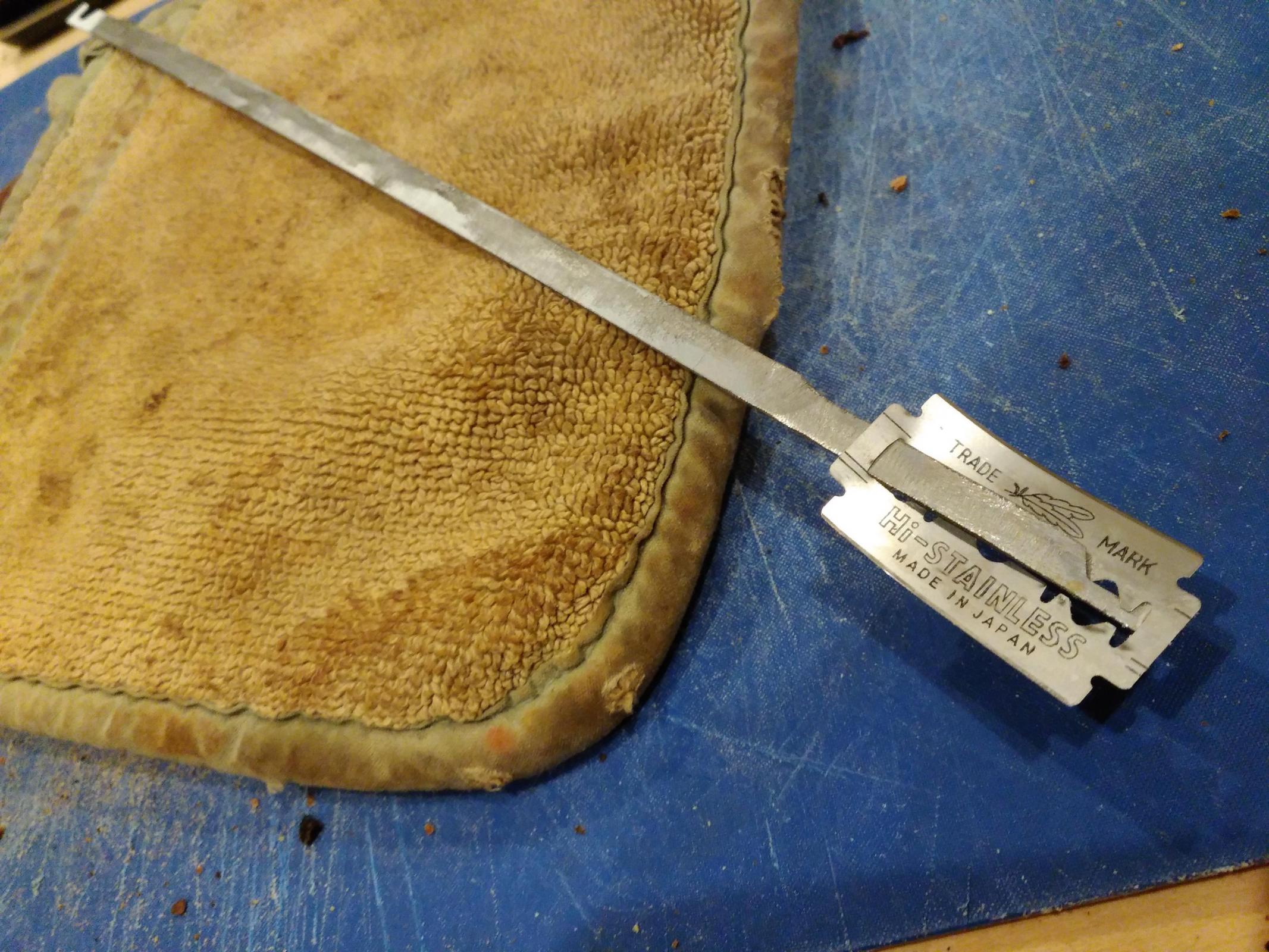I keep seeing people carve beautiful designs into their bread, like the bread is a blank canvas waiting for the deft touch of an artist.
UGHHHH. Everytime I try to score it sticks, and if I confidently rip the razor across the bread things get worse.
There have been two loaves where the scoring was crazy easy. They seemed to have an easy to cut skin formed on the dough. Maybe I had put more flour on their bannetons.
I even fabricated my own lame (see photo) and ordered the sharpest razor blades on the market to adorn my lame. Still no dice.
Please help.

is easier to score. So scoring after retarding the dough in the fridge is much easier then from room temperature (all else being equal of course). A lightly floured dough surface can also help.
Shaping correctly with a taut skin is important. You'll know it has been done right when it comes to the scoring.
Dough smells fear so if you show any hesitancy whatsoever it won't behave and this goes for all aspects when it comes to dough handling.
first attack on the dough, blade and all, the very first inch ... and post it. :)
my stick is a little thicker and the same width (inside & outside end) where the blade slips on. That little change might make a better curve in the blade. I also drilled a hole in a Child safety bottle and slip the handle out thru the hole locking the bladed end inside the bottle. When not in use it looks more like a paste jar.
typically sticking happens when you are scoring really slack sticky dough and it will take a long time to get command of it no matter how sharp / new your razor is even with the good advice above. Ever notice how ciabatta is rarely scored ? It's too slack. You may benefit from starting with a dough that's lower in hydration and then apply the advice above - do cold retard, flour surface, quick pierce etc then move up the hydration scale. Here's one thing to think about - an imperfect score will still bloom with a good fast energetic bake just maybe not perfectly shaped ear - scoring is but one factor and blade is sticking, it's probably a good idea to adjust the dough (and not the lame)
A touch of oil helps me. I spray a touch of vegetable oil on the blade before slashing.
Ford
Thanks for the feedback and ideas everyone. I have a lot things to try (oil, adjusting the blade, retarding the dough). As for low hydration dough, that is helpful, I am not ready to move away from high hydration yet, still playing with it, but, at least I have an idea why I am struggling so much.
You already heard the lower hydration and cold dough, but I will bet you that many of those artful designs are proofed in a coth lined benetton or couche. The coth sucks out the water on the shin drying it out perfectly to be used as an art scoring canvas. Since the skin is dryer, the dough really is forced to blast through the score too making for much better bloom. If you spritz lightly after scoring you will get blisters too. Don't tell anyone else and don't tell Lucy I let her secrets out.
Happy scoring.
I read your comment and almost missed the key point... the "cloth" lined banneton! Cool, I hadn't thought of that, and it makes a lot of sense. I have two small banneton that have cloth liners. My bigger ones don't. I am going to give that a try next time. Gracias!
Give Lucy a rawhide for me!
Ha, ha he is just joking! Now, this this tip is very interesting and I agree as for all my cane forms I use a towel...and I noticed that with the more popular pulp brotforms the dough is also drier....and not towel is needed...so if I want a nice pattern I tend to use the brotforms....but that might we just my imagination and here in UK they tend to be cheaper than the cane or other fancy forms and seem to be more widely used now by bakers.... Kat